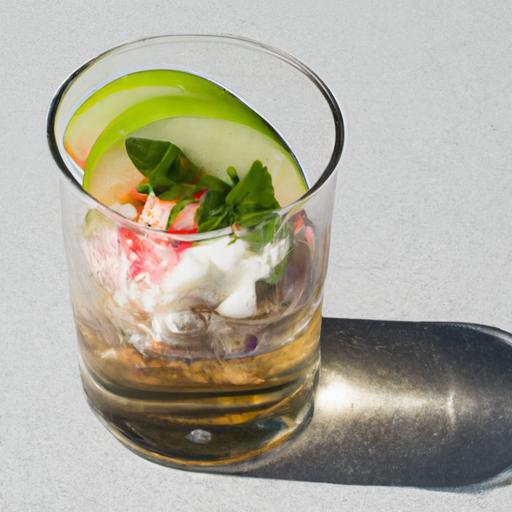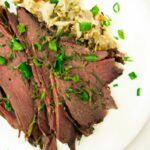In the world of fermented beverages, kombucha has bubbled its way from niche curiosity to beloved staple, captivating taste buds with its tangy fizz and healthful charm. But what if your love for this effervescent elixir could transcend the occasional store-bought bottle or batch-by-batch hassle? Enter the art of crafting your very own continuous kombucha system-a seamless flow of bubbling goodness that dances between tradition and innovation. In this guide, we’ll unlock the secrets to building a brew-on setup that keeps your fermentation alive and thriving, transforming your kitchen into a mini kombucha brewery where creativity and science ferment in perfect harmony. Whether you’re a seasoned scoby wrangler or a curious newcomer, get ready to embark on a carbonated journey that puts endless kombucha at your fingertips.
Brew On essential components for an efficient continuous kombucha setup unlock the secrets of crafting healthful, effervescent elixirs with ease and precision. This continuous brewing method transforms your kitchen into a kombucha sanctuary where every batch builds upon the last, ensuring consistent flavor and limitless supply. The journey begins with mastering your SCOBY-the symbiotic culture that breathes life into your tea-and selecting the perfect blend of leaves and sweetener to coax out dynamic, layered fermentations.
Prep and Cook Time
- Preparation: 30 minutes
- Initial Fermentation: 7-10 days
- Continuous Cycle Adjustment: Ongoing, typically 3-5 days per batch refresh
Yield
Approximately 1 gallon of continuous kombucha, steadily replenished and ready for sipping or flavoring.
Difficulty Level
Medium: Requires attention to fermentation conditions and regular maintenance, but highly rewarding once mastered.
Ingredients
- 1 gallon filtered water (chlorine-free for optimal SCOBY health)
- 1 cup organic cane sugar (unrefined for richer fermentation)
- 8 grams loose-leaf black tea or green tea (non-flavored, pure)
- 1 SCOBY (symbiotic culture of bacteria and yeast, healthy and active)
- 2 cups starter kombucha (unpasteurized, from a prior batch or store-bought raw kombucha)
- Optional: herbs or fruit peels for secondary flavoring
Instructions
- Boil 1 gallon of filtered water in a large stainless steel or glass pot to avoid metallic reactions.
- Once boiling, remove from heat and add 1 cup of organic cane sugar. Stir gently until fully dissolved.
- Add 8 grams of loose-leaf black or green tea, cover with a breathable cloth, and steep for 10-15 minutes until deep amber.
- Remove tea leaves by straining through a fine mesh sieve to avoid residues that may interfere with fermentation.
- Let the sweetened tea cool completely to room temperature (below 80°F) to avoid damaging your SCOBY.
- Pour the cooled tea into your continuous brew vessel, typically a glass jar or ceramic crock with a spigot for easy dispensing.
- Add 2 cups of starter kombucha and gently lower the SCOBY into the tea.
- Cover the vessel with a tight-weave cloth or coffee filter secured with a rubber band to prevent contaminants while allowing airflow.
- Place your setup in a warm (70°-80°F), dark spot with good air circulation-ideal for fermentation and SCOBY growth.
- Allow the kombucha to ferment undisturbed for 7 to 10 days for the initial batch; later, dispense kombucha from the spigot and replenish with sweet tea incrementally to maintain the continuous cycle.
- As your SCOBY thickens, gently peel layers apart to share or store, ensuring healthy growth and robust fermentations.
- For flavor variations, transfer portions of brewed kombucha to airtight bottles with fruit or herbs for a secondary fermentation collecting naturally effervescent bubbles.
Tips for Success
- Maintain optimal temperature: Yeast and bacteria thrive best between 70°-80°F. Use a temperature logger or heating mat if necessary.
- Choose your tea wisely: Pure black or green teas provide rich nutrients; avoid flavored or herbal teas which may harm your SCOBY.
- Monitor your SCOBY health: A healthy SCOBY looks opaque, creamy white, and slightly bouncy. Brown residue or mold indicates contamination-discard immediately.
- Adjust fermentation time based on taste: Longer ferments yield more acidity and less sweetness.
- Keep your equipment clean: Use food-grade glass or ceramic to prevent off-flavors.
- Refresh your tea sweetener regularly: Continual replenishment ensures your culture stays nurtured and lively.
Serving Suggestions
Pour your perfectly brewed kombucha over ice in a tall glass garnished with a twist of citrus, a sprig of fresh mint, or a few berries for a vibrant, refreshing sip. Pair with light salads, grilled vegetables, or spicy Asian cuisine to elevate your dining experience. Store extra batches chilled or proceed with secondary fermentation in sealed bottles to develop natural carbonation and exciting fruit-infused notes.
| Nutrient | Per 8 oz Serving |
|---|---|
| Calories | 30-50 (varies with fermentation length) |
| Protein | 0.1 g |
| Carbohydrates | 7-10 g (mostly residual sugars) |
| Fat | 0 g |

Exploring more on kombucha fermentation techniques can deepen your understanding and boost your brewing confidence. For an in-depth dive into microbial dynamics behind kombucha, visit NCBI’s research on kombucha microbiology.
Q&A
Q&A: Brew On – Crafting Your Continuous Kombucha System
Q1: What exactly is a continuous kombucha system, and why should I consider crafting one?
A1: A continuous kombucha system is a brewing setup that lets you keep your kombucha flowing seamlessly-no more waiting weeks between batches! Instead of stopping to brew, you continuously add fresh sweet tea and harvest fermented kombucha, making the process smoother, faster, and more endlessly rewarding. If you’re craving a steady stream of tangy, effervescent elixir, this system is your kombucha dream come true.
Q2: How does the continuous system differ from traditional batch brewing?
A2: Traditional batch brewing means you start and stop-brew a batch, wait for it to ferment, then bottle and clean. With a continuous system, you maintain a “mother” brew in one vessel, periodically harvesting finished kombucha and replenishing with fresh sweet tea. This way, the culture stays happy and active, and you enjoy fresh kombucha on demand, transforming brewing from a project to an ongoing ritual.
Q3: What are the key components needed to craft my own continuous kombucha system?
A3: At the heart, you need a wide-mouth container (glass or food-safe plastic), a scoby (your kombucha culture), starter tea from a healthy previous batch, and a supply of sweetened tea. Add in a spigot near the bottom for effortless harvesting, and optionally, a second vessel for bottling. Proper airflow with breathable covers keeps your kombucha thriving. These basics set the stage for continuous magic.
Q4: Are there any special tips for maintaining the continuous kombucha system?
A4: Absolutely! Keep the tea temperature stable-ideally between 68-78°F-and check your culture’s health regularly. Harvest kombucha every 1-2 weeks, leaving enough liquid behind to support the scoby colony. Avoid metal utensils (they can harm your culture!) and keep your system shielded from direct sunlight and contaminants. With a little care, your continuous brew will flourish like a well-tended garden.
Q5: Can I experiment with flavors in a continuous kombucha system?
A5: Without a doubt! While the main fermentation happens continuously, you can bottle small batches of harvested kombucha and add fruits, herbs, or spices for secondary fermentation. That way, your base brew stays pure and healthy, while your taste buds enjoy an ever-changing symphony of flavors. Stay creative, and let your kombucha tell a flavorful story.
Q6: What are some common challenges new brewers face with continuous systems, and how can they overcome them?
A6: New brewers sometimes struggle with off-flavors, mold, or slow fermentation. These usually stem from temperature fluctuations, contamination, or insufficient starter tea. To troubleshoot, maintain cleanliness, ensure good airflow but no exposure to dust or pests, keep a stable warm environment, and never let your kombucha run dry. Patience and observation are your brewing allies.
Q7: Why is crafting a continuous kombucha system a rewarding experience beyond just drinking kombucha?
A7: Building your own continuous kombucha system is like nurturing a living, bubbling companion. It connects you to tradition, science, and nature’s rhythms. Watching it thrive feeds creativity and mindfulness-it’s a tactile reminder that fermentation is a dance of patience and care. Plus, it transforms your kitchen into a mini fermentation lab full of life and flavor, a true labor of love you get to savor daily.
Ready to Brew On? Embrace the continuous flow, and let your kombucha journey bubble endlessly forward!
Concluding Remarks
As you embark on your journey to master the art of continuous kombucha brewing, remember that this system is more than just a method-it’s a living, evolving partnership between you and your culture. With patience, curiosity, and a touch of creativity, your continuous brew system will not only streamline production but also unlock new depths of flavor and fermentation magic. So, brew on boldly, experiment freely, and savor every sparkling sip of the probiotic elixir you’ve crafted with care. Here’s to endless batches and the vibrant community that grows with every pour!


